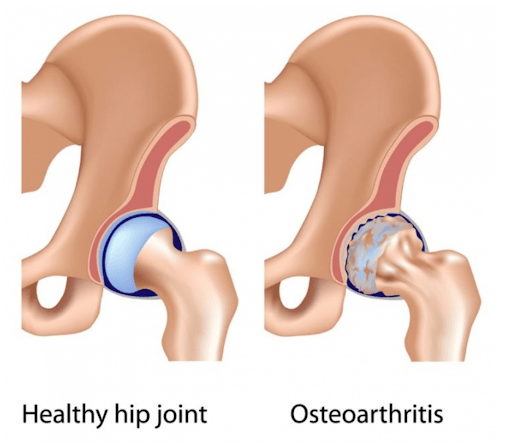Hip Arthritis
Overview
There are three main types of arthritis, Inflammatory Arthritis, Osteoarthritis and Post-Traumatic Arthritis.
Any condition that damages the cartilage covering the bony surfaces of the hip joint, namely the femoral head and the acetabulum, will cause derangement of the cartilage. This is Arthritis. If the cartilage is damaged, it cannot provide the normal smooth motion and withstand the forces placed upon it with day to day activities and sports. This leads to pain and disability.
Detailed Description
Inflammatory arthritis is a condition that usually affects multiple joints. There are several types including Rheumatoid Arthritis and Psoriatic Arthritis. The inflammation created within the joint also affects the soft tissues and can cause swelling, instability and stiffness as well as chronic pain. If you have inflammatory arthritis, you will probably be being looked after by a Rheumatologist already. Large joint disease such as hip and knee arthritis tend to occur later in the course of inflammatory arthritis and is a combination of direct damage to the cartilage from the inflammatory process, and also from the instability caused when the soft tissues become affected. This allows unnatural movement of the joint, overloads the cartilage and causes it to degrade.
Osteoarthritis or OA, is a degenerative (wear and tear) condition affecting the cartilage that covers the surface of a joint. Unlike inflammatory arthritis, osteoarthritis usually affects one joint, or rarely two at a time. It can affect the ball and socket of the hip joint. The ball is at the top of the thigh bone (Femur) and the socket is called the acetabulum and is part of the pelvis. This cartilage is called Articular cartilage (Articular = of the joint). OA usually comes on in older patients as the cartilage wears out over time, but can occur early in patients with abnormal mechanics of the hip, instability or following trauma. Other factors include obesity, avascular necrosis (loss of the blood supply to the femoral head), or may be the long term result of a childhood hip condition. Anything that damages the cartilage can predispose it to osteoarthritis.

Post-Traumatic Arthritis occurs following injury to the joint, namely trauma. A fracture through the joint surface causes direct damage to the cartilage which will then degrade, but can also cause irregularities to the joint surface, such as steps or gaps. When this occurs, the forces at the irregular point become very high, and overcome the ability of the cartilage to withstand them. The cartilage then begins to degrade causing arthritis. This can occur very quickly following an injury.













